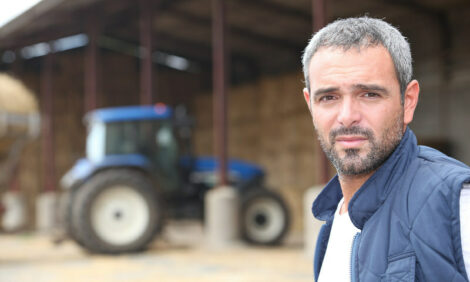



Monitor Cow Condition to Ensure Successful Breeding
US - Calving time can be both a stressful and exciting time of year with your beef herd.Despite the late hours, worries about weather, and that cow or two that never cooperates (every farm has one), calving season also represents the most optimistic aspect of farming - each calf represents a new opportunity for the future.
While breeding season is months down the road, the condition of your cows now can have a major impact on fertility and your 2014 calf crop.
It's no secret that the total body energy reserves of the cow play a major role in reproductive efficiency. The best way for the manager to periodically estimate the energy reserves is to individually record body condition scores.
Beef producers typically use a 9 point scale with 1 being extremely thin, 9 being obese, and around 5 ideal. The challenge for you, the herd manager, is biology dictates that reproduction is relatively low on the list of energy priorities.
Maintenance, growth, lactation, and fetal growth all take priority over breeding. Furthermore, environmental stressors such as extreme cold, or wet and muddy conditions, can greatly increase maintenance energy requirements.
When energy intake is below what is required of the cow's needs, the cow will compensate by using stored body fat, which we can observe through declining body condition scores. The classic example of this is soon after calving, when the energy demands of lactation often exceed energy intake by the cow.
So what does this all have to do with reproduction, and why should you be monitoring body condition scores at calving? The key is that the amount of time from calving to when the cow will resume reproductive cycling is greatly impacted by energy balance.
In one study, cows with a body condition score of 3 at the time of calving averaged 88 days from calving until their first heat. Cows with more desirable body condition scores of 5 or 6 averaged 51-59 days from calving until their first heat.
To maintain a 12 month calving interval, cows must conceive around 80-85 days post calving. Those cows that haven't been in heat yet by 85 days post calving will have no chance to maintain a 12 month calving interval.
In the example above, the average cow in the 3 point body condition group did not have an opportunity to maintain a 12 month calving interval.
Moreover, thin cows that fail to regain body weight may never begin cycling during the breeding season, and will add to the number of reproductive culls. In essence, these cows are at a great breeding disadvantage before most of us even think about breeding season.
The dollars and cents low body condition scores at calving cost really add up when you factor in thin cows generally wean lighter calves. While many thinner cows may still get pregnant and calve next year, their calves will generally be born later and likely lighter than their herd mates at weaning time.
This compounds the loss of pounds of calves to sell year after year, and makes putting together groups of uniform feeder calves difficult.
Due to the drought of 2012, many herds in the Midwest went through the winter months with minimal feed supplies. Thus, we may expect to find a few more thin cows at calving this year than we would normally expect.
Later calving herds may have an advantage in being able to improve body condition scores before calving yet this year. For early calving herds, simply knowing to watch thin cows for reproductive challenges can avoid surprises down the road with late calving and open cows next year.
Two tools proven to improve the interval from calving to first heat are early weaning and supplemental progesterone. These management practices are not for everyone, but are options to discuss with your veterinarian, nutritionist, or other consultants before breeding season.
Be proactive in making management decisions, get those cows cycling, and get those cows pregnant in 2013!
TheCattleSite News Desk


